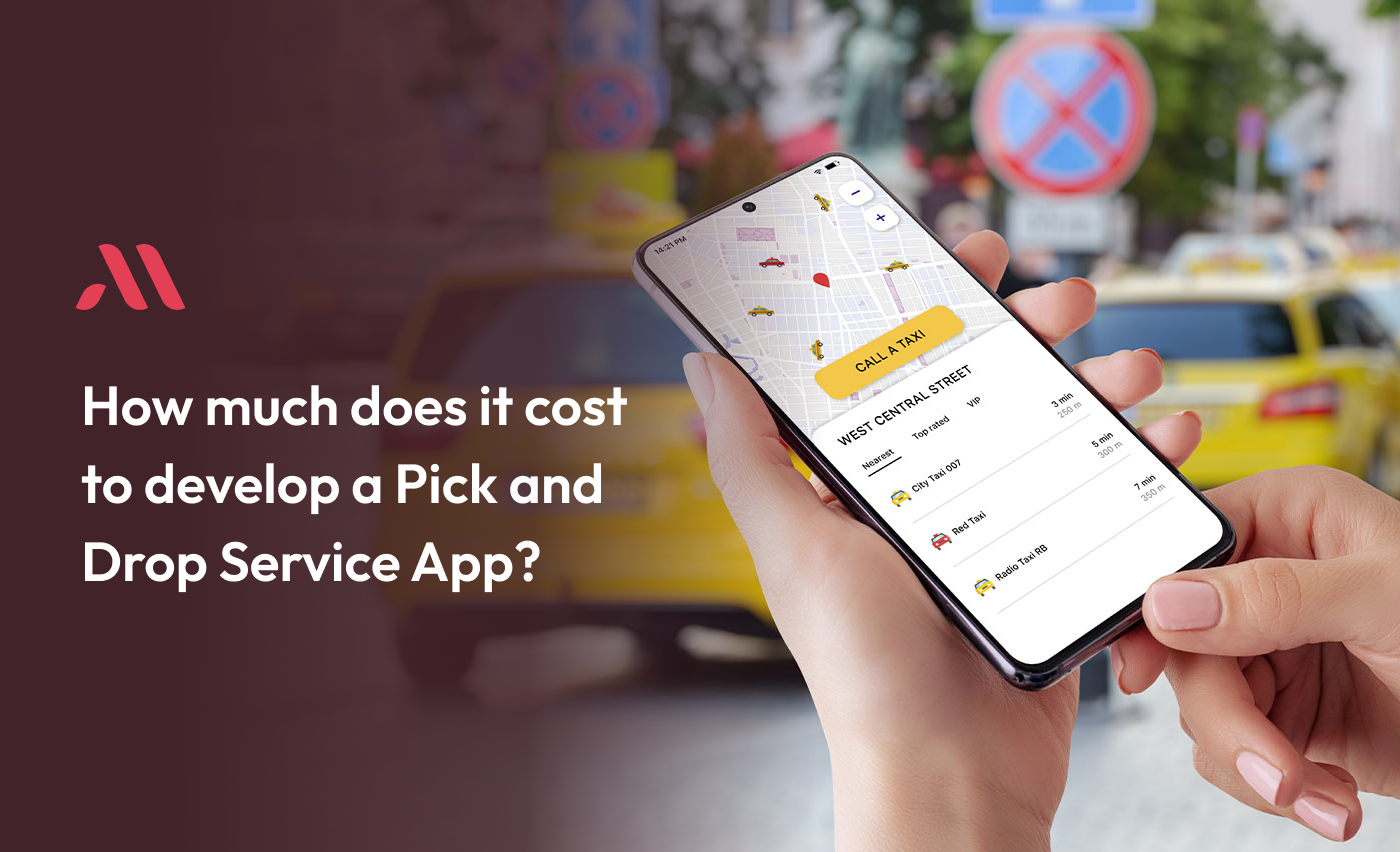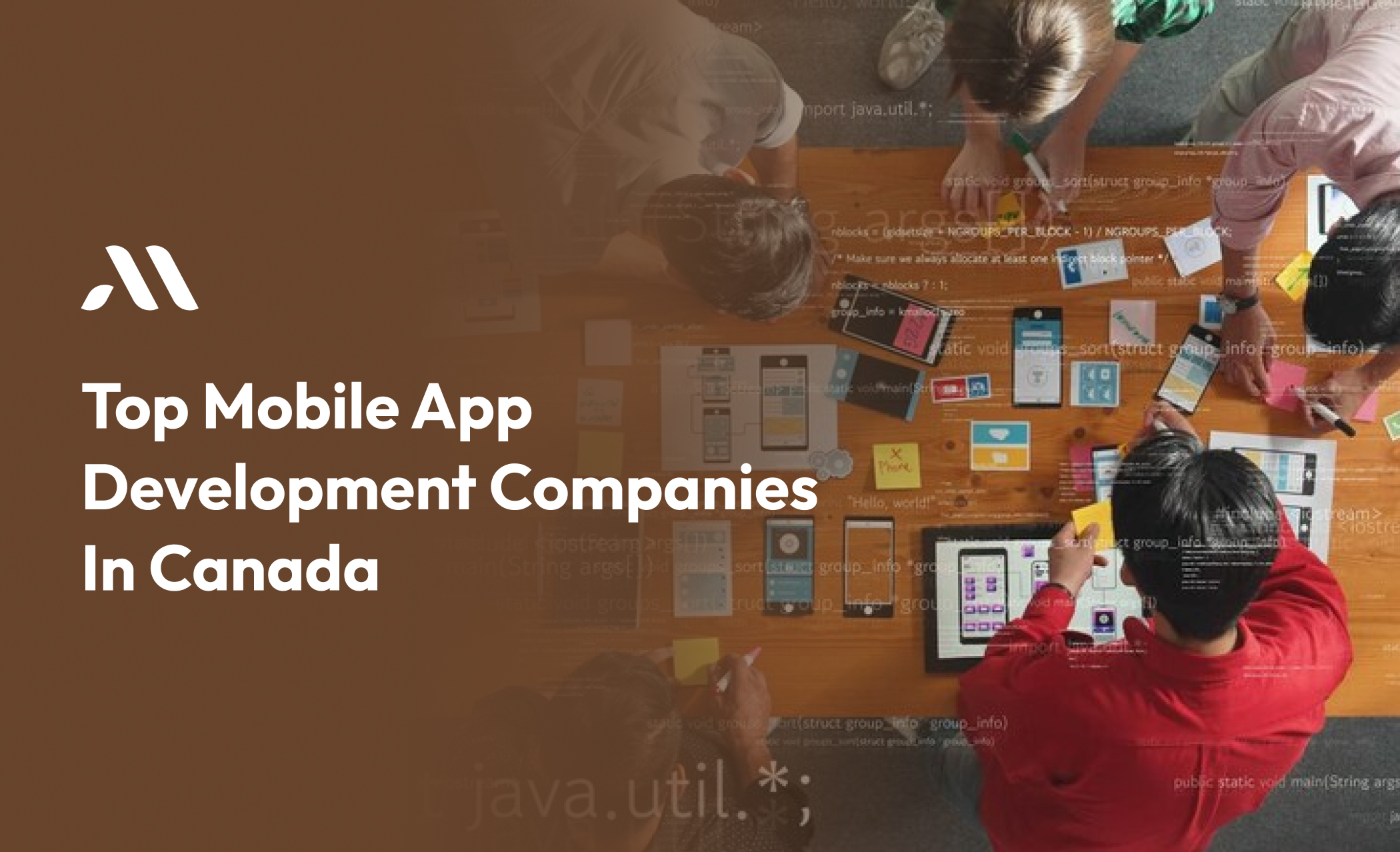Introduction:
Life nowadays moves fast, and we all love convenience. Think about getting groceries right at your door or calling a ride with just a tap on your phone. That's where pick and drop services come in. They're all about making life easier by helping you move things from one place to another without any hassle.
Pick and drop apps are like magic wands. They help you ask for things to be picked up and dropped off at your convenience. Whether it's sending a package, delivering important papers, or moving stuff around, these apps make it simple.
In this guide, we're going to break down how to create your own pick and drop app. We'll start from the basics, like what features you need, and go all the way to how much it might cost you. So, if you're thinking about starting your app or improving your business's logistics, you're in the right place. Let's dive in and make sense of it all, step by step. So now let's see how by this article we will help you develop a scalable Pick and Drop Mobile App.
What is a Pick and Drop Service App?
A pick and drop service app is a mobile application that facilitates the transportation of goods, parcels, or individuals from one location to another. It allows users to request pickups and drop-offs through a digital platform, connecting them with service providers such as drivers, couriers, or delivery agents. These apps streamline the entire process, from booking and scheduling to tracking and payment, offering convenience, efficiency, and transparency for both users and service providers.
Pickup and Drop Software Market size
Delivery Management Software Market size was valued at USD 1,611.30 Million in 2020 and is projected to reach USD 3,729.46 Million by 2028, growing at a CAGR of 10.82% from 2021 to 2028.
What are the benefits of pick and drop service App?
Convenience: Users can request pickups and drop-offs from the comfort of their homes or offices, saving time and effort.
Efficiency: The app streamlines the entire process, from scheduling pickups to tracking deliveries, ensuring tasks are completed quickly and smoothly.
Flexibility: Users have the flexibility to schedule pickups and drop-offs at their preferred time and location, accommodating their busy schedules.
Accessibility: The app makes transportation and logistics services more accessible to a wider audience, including individuals with limited mobility or transportation options.
Transparency: Real-time tracking and updates provide users with visibility into the status and location of their deliveries, enhancing trust and confidence in the service.
Cost-Effectiveness: Businesses can save costs by outsourcing delivery tasks on an as-needed basis, avoiding the expenses associated with maintaining in-house delivery fleets.
Scalability: The app can scale up or down to meet fluctuating demand and seasonal variations, ensuring efficient handling of deliveries at all times.
How does this app work
User Registration:
Users download the app from the app store and create an account by providing necessary details like name, email, and password.
Request Submission:
Users initiate a request by specifying the pick-up and drop-off locations along with any additional instructions, such as the type of item being transported or any special handling requirements.
Matching with Service Providers:
The app matches the user's request with available service providers (drivers or delivery agents) in the vicinity who are equipped to handle the task.
Confirmation and Tracking:
Once a service provider accepts the request, the user receives confirmation along with details such as the estimated time of arrival and the service provider's contact information. Users can track the progress of their requests in real time through the app.
Pick-up and Transportation:
The service provider picks up the item from the specified location and transports it to the designated drop-off point, adhering to any special instructions provided by the user.
Delivery Confirmation:
Upon successful delivery, the user receives a notification confirming the completion of the task. Users may also have the option to rate and review the service provider based on their experience.
Payment Processing:
The app facilitates secure payment processing, allowing users to pay for the service either through integrated payment gateways or cashless payment methods like credit/debit cards or digital wallets.
Feedback and Support:
Users can provide feedback on the service received and reach out to customer support if they encounter any issues or have inquiries regarding the service.
Types of Pick and Drop Apps
Parcel Delivery Apps:
These apps focus on facilitating the pickup and delivery of parcels and packages, catering to individuals and businesses looking for reliable courier services.
Food Delivery Apps:
Food delivery apps enable users to order food from restaurants and have it delivered to their doorstep. They typically offer pickup options for customers who prefer to collect their orders themselves.
Ride-Sharing and Taxi Apps:
While primarily focused on passenger transportation, ride-sharing and taxi apps often offer additional services such as package delivery or courier services, allowing users to request pickups and drop-offs for items.
Courier Service Apps:
Courier service apps specialize in providing on-demand courier services for businesses and individuals, offering features such as scheduled pickups, real-time tracking, and delivery confirmation.
Grocery Delivery Apps:
Grocery delivery apps enable users to order groceries online and have them delivered to their homes. Some apps may also offer pickup options for customers who prefer to collect their groceries themselves.
Laundry and Dry Cleaning Apps:
These apps allow users to schedule pickups and drop-offs for laundry and dry cleaning services, providing convenience and flexibility for busy individuals.
Retail Pickup Apps:
Retail pickup apps enable users to shop online and pick up their purchases from designated locations, such as retail stores or curbside pickup points.
Logistics and Supply Chain Management Apps:
These apps focus on optimizing logistics and supply chain operations for businesses, providing features such as inventory management, order tracking, and route optimization for pickups and deliveries.
Medical Pickup and Delivery Apps:
Medical pickup and delivery apps cater to healthcare facilities and patients, facilitating the transportation of medical supplies, samples, and equipment between locations.
Specialty Pickup and Drop Apps:
These apps cater to specific industries or niche markets, offering tailored pickup and drop services for unique needs such as pet transportation, furniture delivery, or document courier services.
Businesses that can invest in the pickup-and-drop app
Courier and Delivery Services:
Established courier and delivery companies can invest in pickup-and-drop apps to enhance their service offerings and reach a broader customer base. By providing a user-friendly app for customers to schedule pickups and track deliveries, these businesses can improve efficiency and customer satisfaction.
Transportation Companies:
Taxi and ride-sharing companies can diversify their services by investing in pickup-and-drop apps for parcel delivery and other logistics solutions. This allows them to leverage their existing fleet of vehicles and drivers to provide on-demand delivery services in addition to passenger transportation.
E-commerce Platforms:
Online retailers and e-commerce platforms can invest in pickup-and-drop apps to offer convenient delivery options to their customers. By integrating pickup-and-drop services into their platform, they can provide flexible delivery choices and streamline the fulfilment process for orders.
Retail Chains:
Brick-and-mortar retailers can invest in pickup-and-drop apps to offer click-and-collect services, allowing customers to order online and pick up their purchases in-store or have them delivered to their doorstep. This provides a seamless omnichannel shopping experience and enhances customer convenience.
Food and Grocery Delivery Services:
Restaurants, grocery stores, and food delivery platforms can invest in pickup-and-drop apps to expand their delivery capabilities and improve order fulfilment. By offering pickup options in addition to traditional delivery, they can cater to customers who prefer to collect their orders themselves.
Logistics and Supply Chain Companies:
Logistics and supply chain companies can invest in pickup-and-drop apps to optimize their operations and streamline the movement of goods. By digitizing the pickup and delivery process, they can improve efficiency, visibility, and coordination throughout the supply chain.
Startups and Entrepreneurs:
Entrepreneurs and startups with innovative ideas for pickup-and-drop apps can attract investment from venture capitalists, angel investors, and crowdfunding platforms. By demonstrating the potential for disruption and scalability, they can secure funding to develop and launch their app.
Travel and Hospitality Industry:
Hotels, resorts, and travel agencies can invest in pickup-and-drop apps to provide transportation services for their guests, such as airport transfers, sightseeing tours, and shuttle services. By offering a convenient way to book and manage transportation, they can enhance the overall guest experience.
Technology stack needed to develop a Pick and Drop app
Frontend Development:
- Programming Languages: JavaScript (for web-based apps), Swift (for iOS apps), Kotlin or Java (for Android apps).
- Framework/Library: React.js or Angular (for web-based apps), React Native or Flutter (for cross-platform mobile apps).
- UI/UX Design: Use design tools like Adobe XD, Sketch, or Figma to create intuitive and user-friendly interfaces.
Backend Development:
- Programming Languages: Node.js, Python, or Java.
- Framework: Express.js (for Node.js), Django or Flask (for Python), Spring Boot (for Java).
- Database: MongoDB, PostgreSQL, or MySQL for storing user data, delivery information, and other relevant data.
- Authentication: Implement authentication mechanisms using JSON Web Tokens (JWT) or OAuth for secure user authentication and authorization.
APIs and Integrations:
- Mapping and Geolocation: Integrate with mapping and geolocation services like Google Maps API, Mapbox, or OpenStreetMap for accurate location tracking, route optimization, and navigation.
- Payment Gateway: Integrate with payment gateways such as Stripe, PayPal, or Braintree to facilitate secure and seamless payment transactions within the app.
- Push Notifications: Use push notification services like Firebase Cloud Messaging (FCM) or Apple Push Notification Service (APNs) to send real-time updates and alerts to users.
DevOps and Deployment:
- Version Control: Use Git for version control and collaboration among development team members.
- Continuous Integration/Continuous Deployment (CI/CD): Implement CI/CD pipelines using tools like Jenkins, CircleCI, or GitLab CI/CD for automated testing, building, and deployment.
- Cloud Hosting: Host the application on cloud platforms such as Amazon Web Services (AWS), Google Cloud Platform (GCP), or Microsoft Azure for scalability, reliability, and easy management.
- Containerization: Utilize containerization technologies like Docker for packaging and deploying the application components as lightweight, portable containers.
Monitoring and Analytics:
- Monitoring: Implement monitoring and logging solutions like Prometheus, Grafana, or ELK Stack (Elasticsearch, Logstash, Kibana) for tracking application performance, identifying issues, and troubleshooting.
- Analytics: Integrate analytics tools like Google Analytics or Mixpanel to gather insights into user behavior, app usage patterns, and performance metrics for continuous improvement.
How Much Does it Cost to Develop Pick and Drop Service Application?
Basic Pickup and Drop App:
- Features: This type of app includes essential features such as user registration, booking and scheduling, real-time tracking, basic driver management, and payment integration.
- Estimated Cost: The development cost for a basic pickup and drop app can range from $10,000 to $30,000, depending on factors like platform (iOS, Android, or both), complexity, and development team rates.
Advanced Pickup and Drop App:
- Features: This type of app includes additional features such as advanced driver management (with driver profiles, ratings, and earnings tracking), route optimization, support for multiple languages/currencies, and more customization options.
- Estimated Cost: Developing an advanced pickup and drop app may cost between $30,000 to $50,000 or more, depending on the complexity and customization requirements.
Enterprise Pickup and Drop App:
- Features: Enterprise-level apps are tailored for large-scale operations and may include features such as fleet management, enterprise-grade security, custom analytics and reporting, integration with existing enterprise systems (e.g., ERP, CRM), and dedicated support.
- Estimated Cost: The development cost for an enterprise pickup and drop app can vary significantly depending on the specific requirements and scale of the project. It may range from $50,000 to $100,000 or more, depending on the complexity and integration needs.
Custom Pickup and Drop App:
- Features: Custom apps are built from scratch and may include unique features tailored to specific business needs. These apps often require extensive customization, integration with proprietary systems, and advanced functionalities not available in off-the-shelf solutions.
- Estimated Cost: Developing a custom pickup and drop app can be more expensive, with costs ranging from $100,000 to $500,000 or more, depending on the complexity, scale, and customization requirements.
Top Pick and Drop Service Application
Uber:
Uber offers various services, including ride-sharing, food delivery (Uber Eats), and package delivery (Uber Connect or Uber Rush in some regions).
Users can request pickups and drop-offs for both passengers and packages through the Uber app.
Lyft:
Similar to Uber, Lyft provides ride-sharing services and has expanded into other areas such as food delivery through partnerships.
Users can use Lyft to request rides and deliveries conveniently.
DoorDash:
DoorDash is primarily known for its food delivery services, allowing users to order from a wide range of restaurants and have meals delivered to their doorstep.
The app also offers pickup and drop-off services for groceries, convenience items, and other essentials in some regions.
Postmates:
Postmates offers on-demand delivery services for a variety of items, including food, groceries, alcohol, and household goods.
Users can request pickups and drop-offs for their orders through the Postmates app.
Instacart:
Instacart specializes in grocery delivery, allowing users to order groceries from local stores and have them delivered to their homes.
Users can schedule pickups and drop-offs for their grocery orders through the Instacart app.
DHL:
DHL is a global logistics company that offers courier, parcel, and express mail services.
The DHL app allows users to schedule pickups for shipments, track packages in real time, and manage deliveries.
FedEx:
FedEx provides a range of shipping and delivery services, including same-day delivery, express shipping, and international shipping.
The FedEx app enables users to schedule pickups, track shipments, and manage deliveries conveniently.
UPS:
UPS offers shipping, freight, and logistics solutions for businesses and individuals.
The UPS app allows users to schedule pickups, track packages, and access shipping services from their mobile devices.
How to Build a Pick and Drop App
Define Your App's Purpose:
Determine the primary goal of your app. Is it for parcel delivery, food delivery, transportation, or another purpose?
Identify Your Target Audience:
Understand who will be using your app. Consider their needs, preferences, and pain points related to pick and drop services.
Research Your Market:
Analyze your competitors and market trends. Identify opportunities for differentiation and innovation in your app.
Plan Your Features:
Make a list of essential features your app will need, such as user registration, booking, tracking, payments, and notifications.
Design Your App's Interface:
Create wireframes and prototypes to visualize the layout and flow of your app. Design intuitive and user-friendly interfaces for both users and drivers.
Choose Your Tech Stack:
Select the appropriate technologies and frameworks for your app's development, considering factors like platform (iOS, Android, or both), programming languages, and third-party integrations.
Develop Your App:
Hire a development team or work with freelancers to build your app. Divide the development process into phases, starting with the core features and gradually adding more functionalities.
Test Your App:
conduct thorough testing to ensure your app works smoothly across different devices and scenarios. Test for usability, functionality, performance, and security.
Launch Your App:
Prepare for your app's launch by creating marketing materials and optimizing your app store listings. Monitor user feedback and analytics after launch to make improvements.
Provide Ongoing Support:
Continue to support and maintain your app post-launch. Address any bugs or issues promptly and release updates with new features based on user feedback.
How can MicraSol help you in Pick and Drop service App Development?
Mirasol is here to help you every step of the way in building your pick and drop service app. From creating user-friendly interfaces to developing a reliable backend system, we ensure your app meets your requirements. Our thorough testing guarantees reliability and our ongoing maintenance ensures smooth operation post-launch. With our expertise, we can customize the app to fit your unique needs and integrate essential features for success.
FAQ
Q: How long does it take to develop a pick and drop service app?
A: The development timeline for a pick and drop service app can vary based on factors such as the complexity of features, platform (iOS, Android, web), and customization requirements. On average, it may take anywhere from three to six months for basic to mid-level apps, while more complex apps may take longer.
Q: What are the key features that should be included in a pick and drop service app?
A: Essential features for a pick and drop service app include user registration and authentication, booking and scheduling, real-time tracking, payment integration, and notifications. Additional features such as route optimization, driver management, and feedback/rating systems can enhance the user experience.
Q: How much does it cost to develop a pick and drop service app?
A: The cost of developing a pick and drop service app depends on various factors such as the scope of work, complexity of features, technology stack, and development team rates. On average, development costs can range from tens of thousands to hundreds of thousands of dollars.
Q: What technology stack is needed to develop a pick and drop service app?
A: The technology stack for a pick and drop service app typically includes frontend technologies like React Native or Flutter for cross-platform mobile development, backend technologies like Node.js or Python, and databases like MongoDB or PostgreSQL. Integration with mapping and geolocation APIs, payment gateways, and push notification services is also essential.
Q: What are some factors to consider when choosing a development team for a pick and drop service app?
A: When choosing a development team, consider factors such as their experience and expertise in mobile app development, their portfolio of previous projects, their understanding of your specific requirements and industry, their communication and collaboration skills, and their ability to provide ongoing support and maintenance post-launch.








